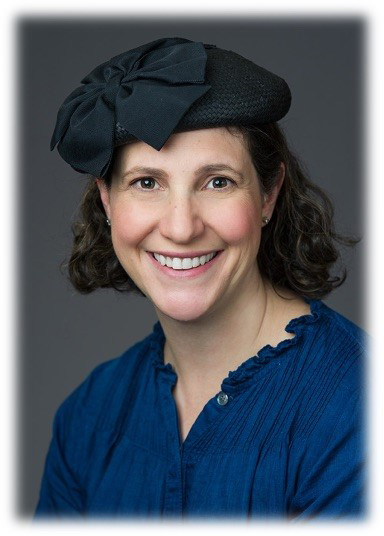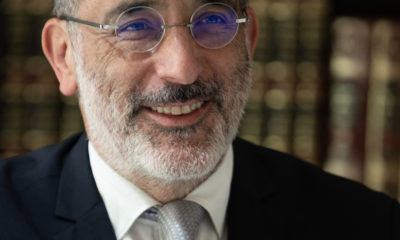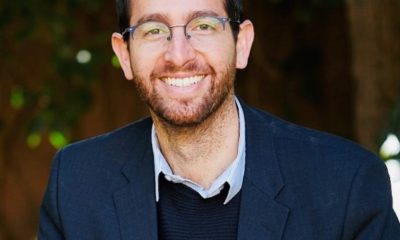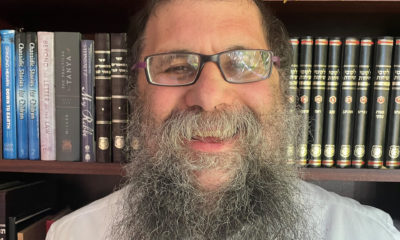
Religion

Listen to the shofar, even if it’s stolen
There’s a key difference between the shofar and other ritual objects. The mishna in Sukkot and elsewhere clearly states that a stolen object cannot be used to perform the ritual. A lulav gazul (stolen lulav) or etrog, tefillin, or even matza aren’t considered to be kosher if stolen because a mitzvah that came about from a sin cannot fulfil the obligation.
It’s strange that the Mishnayot in Mesechet Rosh Hashanah is silent on the topic of a stolen shofar. Although you might assume that a stolen shofar also cannot be used, the Rambam in Mishneh Torah, Hilchot Shofar (1:3), teaches the opposite – a stolen shofar can indeed be used. A surprise twist!
שׁוֹפָר הַגָּזוּל שֶׁתָּקַע בּוֹ יָצָא שֶׁאֵין הַמִּצְוָה אֶלָּא בִּשְׁמִיעַת הַקּוֹל… וְאֵין בַּקּוֹל דִּין גֵּזֶל
A stolen shofar that a person has blown has fulfilled [the obligation], for the commandment is just to listen to the sound, and there’s no law of theft with sound. Sound cannot be stolen.
Using a stolen shofar is kind of insane, especially when you consider that our rabbinic tradition places so much emphasis on the shofar itself. There are specific laws around which animal a shofar can come from, whether it can be bent or straight, gold-plated, or if a cracked shofar can still be used. Clearly, the shofar as an object, the way in which it’s constructed, is significant enough for our tradition to mandate all these laws. And yet, as long as it’s bent, made from a ram, not split along the entire length in half, or gold-plated at the mouth of the shofar, we may use a stolen shofar. The sole indication that a stolen shofar may be problematic is from the Magen Avraham (586:4), who suggests that you shouldn’t make a bracha over it!
I have to say that if I knew I was listening to the tekiyot of a stolen shofar, I wouldn’t feel like I was achieving the purpose of Rosh Hashanah – of coronating G-d as king and thinking about the shofar as a messenger for our tefilot and remembering our past.
The Ra’avad (Laws of Shofar 1:3, based on the Yerushalmi Sukkah 3:1) explains that Rosh Hashanah is defined as yom teruah, a day of sounding the shofar, whose very essence is to stir and awaken us to think about our deeds. And what’s the one thing that prevents us from moving forward? When we get stuck in the past, when we can’t let go of past iniquities and memories, we’re prevented from changing. Perhaps the stolen shofar is a reminder that the past needs to stay in the past if we’re to ever move forward and change.
It’s Rambam’s simple answer that I find most compelling. For the Rambam, the shofar is all about the sound. All the halakhot that make the shofar kosher are intended to preserve the pure sound of the shofar. A cracked, straight, or gold-plated shofar would alter the sound. Since the sound is still intact in spite of the fact that it’s stolen, it accomplishes the purpose of the mitzvah.
This is where our focus must lie. The message of the stolen shofar, the reason why it’s kosher, is to underscore that the object doesn’t matter. I imagine that if today’s ba’al tekiyah was indeed using a stolen shofar, that’s all we would want to talk about. Why did he steal it? Who did he steal it from? Will he return it? But those would be the wrong questions. Our attention may be drawn to the shiny object right before us because it’s human nature to be excited by the austere, beautiful shofar or the ba’al tekiyah himself, but if we notice only the shofar or the person, we’re missing the point of the mitzvah.
There’s actually a name for the phenomenon of being distracted and focusing on the wrong thing: shiny object syndrome (SOS), a psychological concept describing focus on whatever is most current or trendy. In fact, those who fear missing out (FOMO) are especially susceptible as newer, shinier objects cause distraction, cloud judgement, and cause loss of focus.
We worry about the thing that shouts loudest at us in the media. Our attention is short, and must be held by dramatic images. We’re drawn to the heart wrenching images of people dying from COVID-19 or the damage from a hurricane or the pictures of war or the headline about abortion in Texas. And we must care about these things. But these dramatic headlines will disappear and in their wake, there will be individuals still picking up the pieces after suddenly losing a loved one or who struggle from long COVID-19, or there will be a woman who no longer has the right to decide what to do with her body. For every headline, there are individual, more quiet tragedies that don’t make the news. Even our own everyday challenges get lost in the shuffle.
“Awaken!” says the shofar. “Pay no attention to the vessel even if it’s stolen. Pay attention to the sound that emanates that’s calling to your soul.”
It’s easy to become mired in the smallness of the shiny objects. There are so many crises and events that we must pay attention to. Sometimes I wonder how we can even get out of bed with the crushing sensation of it all. Yet, my challenge this year is to cut through the noise and focus on what matters – not on whether the shofar is stolen or not.
The sound of the shofar is a tool for what we can achieve and accomplish in the world. So, this year, when I hear the shevarim truah, I will acknowledge and cry and mourn for all that’s broken, for the things I’m struggling with in my life, for the struggles of our society and world. I’ll allow the sadness to wash over me even if I can’t fix it all today.
And, then, I’ll feel emboldened by the strong, sure sounds of the tekiyot, the sounds that bookend the sadness, and I’ll listen for the song of triumph, hearing that there will be days ahead that are filled with joy, celebration, and hope.
And the familiar sounds of the shofar will keep me focused on what really counts.
- Rabba Sara Hurwitz is the president and co-founder of Maharat.










